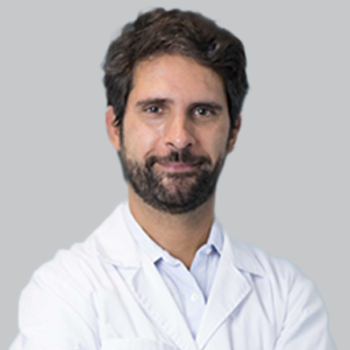
Protecting Brain Health in High-Intensity Sports With Innovative Helmet
Michael McDermott, MD, chief medical executive of Baptist Health Miami Neuroscience Institute, provided commentary on the early stages of a recently designed protective surfing helmet.
Earlier this year, Baptist Health’s Michael McDermott, MD, was awarded a new U.S. patent for a protective surfing helmet designed to lower the risk of injury while out at seas. This was the second patent awarded to
Baptist Health Innovations, home to the Knight Foundation Fellowship in Healthcare Technology Innovation, is comprised of an experienced team of technology commercialization experts who help McDermott in securing the rights to the helmet design. In addition, this group of experienced professionals assisted in drafting a new patent application and helping navigate the patent process with the federal government.
Head injuries in high-intensity sports remain a significant concern due to the physical demands and frequent collisions inherent in these activities. Repeated head trauma, even in the absence of immediate symptoms, can contribute to chronic conditions such as chronic traumatic encephalopathy, a degenerate brain disorder. McDermott, who serves as chief medical executive of Baptist Health Miami Neuroscience Institute, sat down to discuss how this helmet came about and the advantages it may bring surfers and other high-intensity sports. In addition, he gave insight on some of the early personal experiences with the helmet, steps in advancing this type of equipment, and the areas of brain injury that need additional research attention.
NeurologyLive: What went into developing and designing this helmet?
Michael McDermott, MD: When I was back on the west coast at a university center, I had the experience of a patient who had been hit in the temporal region with the tip of his surfboard. He was concussed briefly, felt unwell, but was able to go back to his house. He took some aspirin and went to sleep on the couch, but the next morning, he was unarousable. He had developed a fracture in the squamous temporal bone, which is only about two millimeters thick and lies under the temporalis muscle, above the zygomatic arch. That small area of impact, with great force from the tip of the board, was enough to fracture the bone and lacerate a vein or artery — we're not sure which. It created a significant blood collection outside the dura, leading to herniation, and he didn’t survive.
Now, I’m not a surfer, but my boys are. I knew a bunch of friends who were surfers and looked around to see what protective equipment was available. There was only one helmet called a "Gath helmet," which looked like something between a skateboard and snowboard helmet, but it didn’t cover that part of the scalp or the underlying skull. Then I met an internist, a big surfer in San Francisco, who told me about something called "surfer's ear" — basically external otitis. Surfers are also prone to skin conditions like precancerous or cancerous lesions on their ears because of sun exposure. In California, they wear wetsuits because the water's cold, so the rest of their body is covered, but their head and neck aren't.
That’s when I thought maybe we could tackle two issues at once: cover the squamous temporal bone region and the ear with a perforated cover that wouldn’t interfere with auditory abilities, while providing wind and sun protection. This might help reduce the risk of surfer's ear and sun-induced changes in the skin of the ear. The other thing is, surfers don't like extra equipment. Less is more for them. So it needed to be something very light and unobtrusive. I also wanted the helmet to extend forward into a peak to protect the forehead and the area around the eyes from the surfboard because about 40% of injuries related to surfing are head and neck lacerations.
We weren’t aiming to prevent concussions necessarily, but to provide some external protection for the scalp and squamous temporal bone. I had a neurosurgeon friend in Utah who made wakeboards, and he introduced me to electroluminescent lighting — low voltage fluorescent wires that glow in different colors. They use this on wakeboards, so it's waterproof. I thought it would be great for visibility in Northern California, where after waves reach five feet, surfers are crouched over and basically invisible. The lighting helps others spot the surfer.
The helmet also has an interconnected air bladder system that’s inflatable, so surfers can adjust the pressure for comfort. We found a company through my son’s college that makes software that syncs the helmet with an iPhone to control the pressure. The idea is to make the helmet light and buoyant — and while it’s not specifically designed to prevent concussion, it does provide structural support for the temporal bone, ears, scalp, and forehead.
How has the helmet performed thus far? Describe some of your early experiences.
So far, we’ve only made a couple of prototypes for friends of mine who surf. I made them out of flexible plastic tubing, using copper wire to create a frame based on the size of their heads. The funny thing is, they didn’t want to go out during the day because they didn’t want anyone to see them wearing it! But after about 20 minutes, they forgot they even had it on, which was great because, as I said, surfers don’t like to feel encumbered. We’ve also had some 3D-printed prototypes, but they weren’t exactly what I wanted.
We connected with a helmet manufacturer through the Innovation Center at Baptist, and they might be interested in producing the first official prototype. They make football helmets and other types, so it seems like a good fit. The process is slow and expensive though, so partnering with someone who has the facilities and experience to make multiple revisions is key. We’re also thinking of having two versions: one for recreational surfers made of high-density plastic and one for professional surfers made of carbon fiber.
Are there any other potential ways to expand the use of this helmet?
Yeah, I think surfers are the main group, but it could expand to other water sports, like jet skiing. How many people do you see wearing a helmet on a jet ski? Not many, right? Windsurfing might be another option. I doubt sailors would want to wear one unless the conditions were extreme, but you never know. It’s like skiing — I remember when nobody wore helmets, and now it’s just part of the gear.
There’s also a market. Over 30 million surfers worldwide. So if parents want to protect their kids, this could be an option, especially if we keep the production costs low.
Are there other areas of head injury research that should gain more attention?
Yeah, well, I’ve submitted another patent that’s going to be issued soon. It's for a sporting helmet design that includes football, car racing, hockey, lacrosse, and equestrian sports. Did you know that horseback riding has one of the highest concussion rates? I didn’t! Soccer players also face head injury risks, but I doubt they’d ever wear helmets. The patent also covers a dual-shell design with air bladders and rubber spring-loaded grommets that allow the inner and outer shells to collapse on each other, adding extra protection.
The NFL is a $40 billion industry, and with players' careers being so short, there’s a lot of concern about repetitive sub-concussive events. Testing will tell us whether the helmets I’ve designed offer better protection, and if they do, it’s a step toward reducing head injuries in sports.
Transcript was edited for clarity.
Newsletter
Keep your finger on the pulse of neurology—subscribe to NeurologyLive for expert interviews, new data, and breakthrough treatment updates.








































